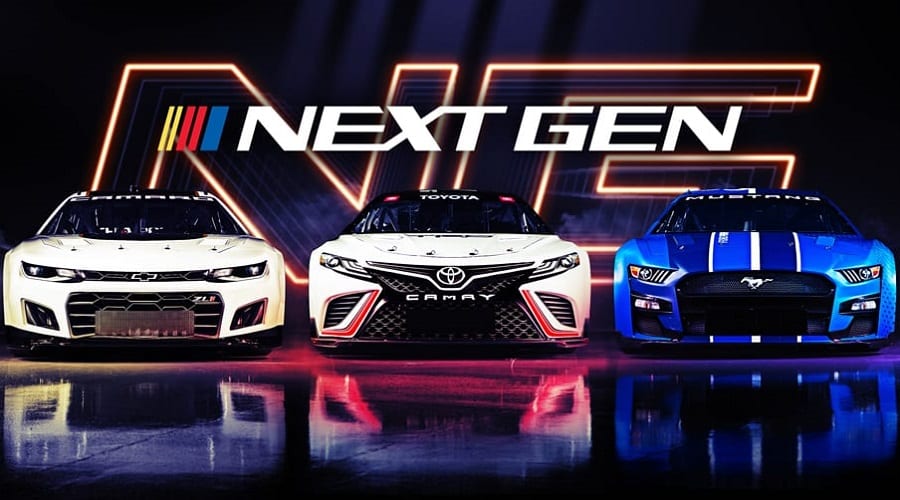
CHARLOTTE, N.C. — NASCAR took the first step into a new era Wednesday afternoon with the revealing of its manufacturer-specific Next Gen cars that will compete in the NASCAR Cup Series starting next year.
The first close-ups of the dressed up, ready-for-competition machines came during an industry event at The Park Expo in Charlotte, N.C., with their body stylings as they’ll compete in nine months’ time.
Ford will continue to compete with its current nameplate, the Mustang, while Chevrolet and Toyota will evolve their models slightly to utilize the Camaro ZL1 and TRD Camry, respectively, in 2022.
But Wednesday’s reveal carried with it a specific mantra that perked fans’ ears up from the moment it was uttered, that Next Gen is “about putting the ‘stock’ back in stock car racing.”
NASCAR President Steve Phelps tipped the cars revealed Wednesday mark NASCAR and the manufacturers’ effort to get back to race cars which look much more like their showroom counterparts.
“This is a significant moment for our sport,” Phelps said. “This car is more relevant and includes more innovation than any car in NASCAR history. The styling of the car is clear. They look unbelievable. We really wanted to get back to a promise that we had made to our fans, which is to put the stock back in stock car. That was an extremely important to us and our fans, but just as important to our fans is the racing on the track. It’s hard to believe that the racing could be any stronger than it was last year or has been in the first 11 races this year, but this car has features that will make it even better.
“Simply put, this car will make our sport healthier and stronger,” Phelps added. “It’s an exciting day for our industry and our fans, and we’re proud of all the work that went into bringing us to this moment.”
Common to all three manufacturer models are a lower greenhouse, shorter deck lid and wider track width to give the Next Gen car more of a coupe look. Independent rear suspension, a transaxle setup and rack-and-pinion steering are also incorporated into the seventh generation of Cup Series race cars.
A fully symmetrical body that removes much of the “skew” seen in the rear ends of the current-generation Cup Series car is meant to remove aerodynamic force and put greater emphasis back on setup and driver skill.
Eighteen-inch, single-lug aluminum wheels — increased from 15-inch steel wheels — will allow for softer tire compounds in the future. The updated styling replicates what is currently found on passenger cars.
Perhaps among the top factors for the on-track action, the Next Gen car will utilize a composite body similar to those currently seen in the NASCAR Xfinity Series, allowing drivers to trade paint with lesser risk of damage that would harm aerodynamic performance during an event.
In short, countless hours of work went into a revolutionary concept that will hit the track for competition next February, when Daytona Speedweeks opens at Daytona (Fla.) Int’l Speedway.
“I’m not even sure I’d be able to add up all of the CAD simulation and lab testing time that went into optimizing this car for performance and safety,” noted John Probst, NASCAR’s Senior Vice President for Innovation and Racing Development. “That all culminates in what you see here today. From our OEMs’ perspective and from our perspective, we’re pretty happy and we think our fans will be pretty excited to see these cars on track next year at the Daytona 500.”
To continue reading, advance to the next page.